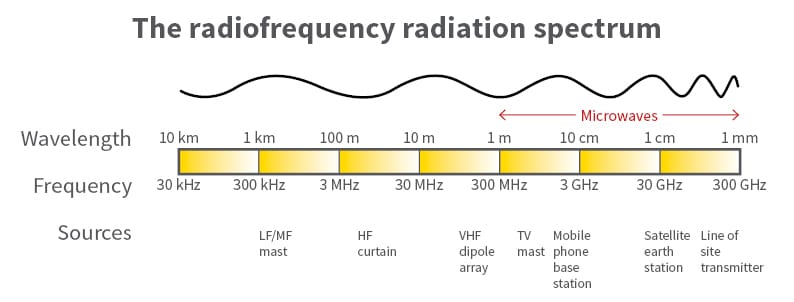This article focuses on the subject of 5G radiation, a non-ionizing electromagnetic radiation. Because 5g radiation is so tiny, it doesn't have the ability to break chemical bonds in biological tissues or trigger any modifications to cells. It isn't known whether 5G radiation can affect the risk of developing skin cancer, and there is no evidence that has been discovered to suggest that it could cause any other diseases.
Millimeter-wave radiation with high frequency
High-frequency millimeter wave radiation emitted by mobile phones and wireless networks can cause health issues to human beings. There are a few different ways that this radiation can cause harm. In certain instances, the radiation can cause damage to someone's DNA. In 5g radiation may cause harm to other areas of the body, like the brain.

Recent research has shown that 5G technology may cause the heating of tissues. In the aftermath, scientists from International Council on Non-Ionizing Radiation Protection (ICNIRP) has asked to review the current safety standards for biological and thermal safety. The current standards of exposure don't protect people from extreme heat in the event of exposure to millimeter wave pulses.
Skin cancer risk
There is no definitive answer at present to the question of whether the 5G radiation could cause skin cancer. It is however believed that 5G RF-EMFs behave much like high-LET ionizing radiations. In turn, they can produce large amounts of free radicals in the skin. The FCC hasn't issued any specific guidelines regarding the dangers of 5G technology. Consequently, the debate is ongoing.
While there are plenty of studies on the effects of higher-frequency radio waves on human health however, their research has been small in extent. However, there is concern over the effects of millimeter-wavelength exposure on oxidative stress and gene expression. These effects could be extended to the skin as well as other organs, such as the brain.
Impact on other diseases
The latest generation of technology for wireless called 5G is rapidly gaining ground However, researchers are warning of its potential health risks. 5G technology is expected to significantly increase the quantity of electromagnetic radiation that is found in our surroundings. This is a concern that has led to debates in a variety of nations which includes Switzerland. In 5g towers radiation and scientists have backed a motion to put the suspension of 5G technology. The motion was not taken seriously by the European Commission, which is responsible for controlling the use of 5G technology.
Therefore there is a need for more research to study the health implications of 5G. In the meantime, studies have shown that 5G does not cause the same negative effects in humans as the radiation from older mobile networks. Also, it doesn't spread a new type of coronavirus. In addition, it does not make people more susceptible to infections caused by viruses.
The measurement of exposure
The measurement of the radiation exposure of 5G is a crucial aspect of ensuring the safety of 5G networks. There are two methods to gauge exposure. One is to measure the RF power absorbed by human tissues. The other is measuring the amount of radiofrequency energy emitted from an object. Radiation frequency energy (RF) is an energy field that is emitted directly from radio receivers.
Within the United States, the FCC has imposed a restriction on the power density of mobile devices running 5G. These tests only determine power density at the distance of only a few inches. the FCC does not require measurements of each beam. However, the power density of each beam can be estimated by computer simulation. The worst-case scenario is selected according to the design of each beam.
The study has its limitations
There's been plenty of discussion over whether the effects of 5G radiation are detrimental to human health. In the case of 5G, for instance. Swiss Government, for instance has released an assessment that concludes that the technology has no adverse health effects in the short-term, however, there aren't any studies which have shown long-term impacts. However, this report has a variety of issues and bias in reportage.
The frequency and power of radio waves that carry energy depend on the frequency. The energy carried by a millimetre-wave will be similar to the frequency of radio waves currently, but they are much less visible and will be more suitable for environments with high density because they cannot be easily obscured by walls or glass. High-density urban areas would require many small, low-power sites, while suburban areas would be better served by 5G sites operating at lower frequencies.
